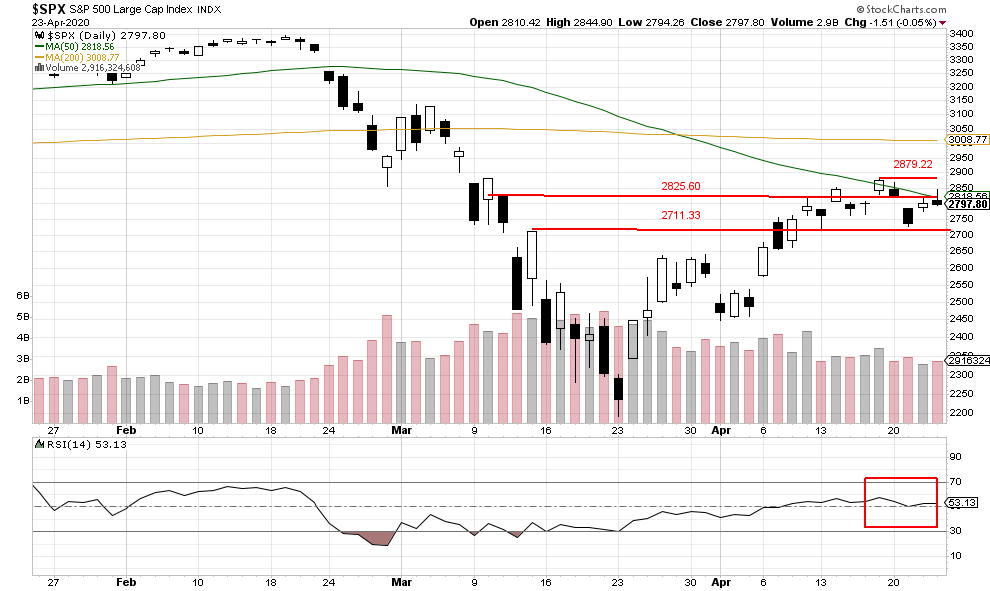Daily Commentary

Headline News:
U.S. stock futures are set to open higher at the end of a volatile week of trading. Analyst expect a 14.1% decline in corporate Q1 earnings after mixed results from banks and consumer discretionary firms so far. President Trump is set to sign the $484 billion coronavirus relief bill after it passed the House last night.
Markets:
The S&P 500 traded above resistance at2825.60 and the 50-day moving average at 2818.56 only to close lower at 2797.80. The index has failed in this price range four times, but that could lead to fewer sellers lurking at the if there is another attempt to breakout. Until then, the base building is continuing, which would be helpful to set up a successful breakout in the future. Potential support remains at 2711.33, but we do not see that level being tested today.
We are currently long-term bullish and short-term bullish.
John N. Lilly III
Accredited Portfolio Management Advisor℠
Accredited Asset Management Specialist℠
Portfolio Manager, RJ
Partner, DJWMG
Windsor Wealth Planners & Strategist
Futures trading is speculative, leveraged, and involves substantial risks.Ðnvesting always involves risk, including the loss of principal, and futures trading could present additional risk based on underlying commodities investments.
The Relative Strength Index (RSI), developed by J. Welles Wilder, is a momentum oscillator that measures the speed and changes of price movements.
The S&P 500 is an unmanaged index of 500 widely held stocks that is generally considered representative of the U.S stock market. Past performance may not be indicative of future results. Keep in mind that individuals cannot invest directly in any index, and index performance does not include transaction costs or other fees, which will affect actual investment performance. Individual investors’ results will vary. Opinions expressed are those of the author John N. Lilly III, and not necessarily those of Raymond James. “There is no guarantee that these statements, opinions or forecast provided herein will prove to be correct. “The information contained was received from sources believed to be reliable, but accuracy is not guaranteed. Investing always involves risk and you may incur a profit or loss. No investment strategy can guarantee success. The charts and/or tables presented herein are for illustrative purposes only and should not be considered as the sole basis for your investment decision. International investing involves special risks, including currency fluctuations, different financial accounting standards, and possible political and economic volatility. Investing in emerging markets can be riskier than investing in well-established foreign markets.
This is not a recommendation to purchase or sell the stocks of the companies mentioned.




